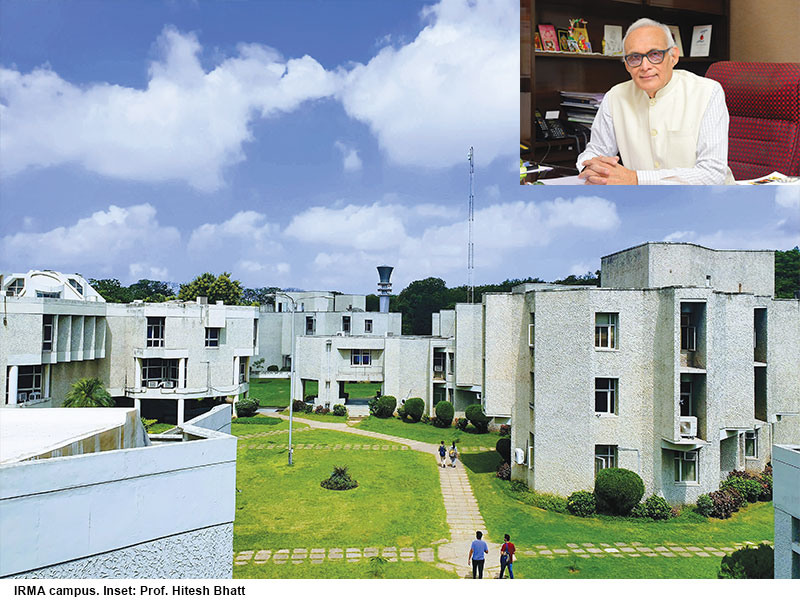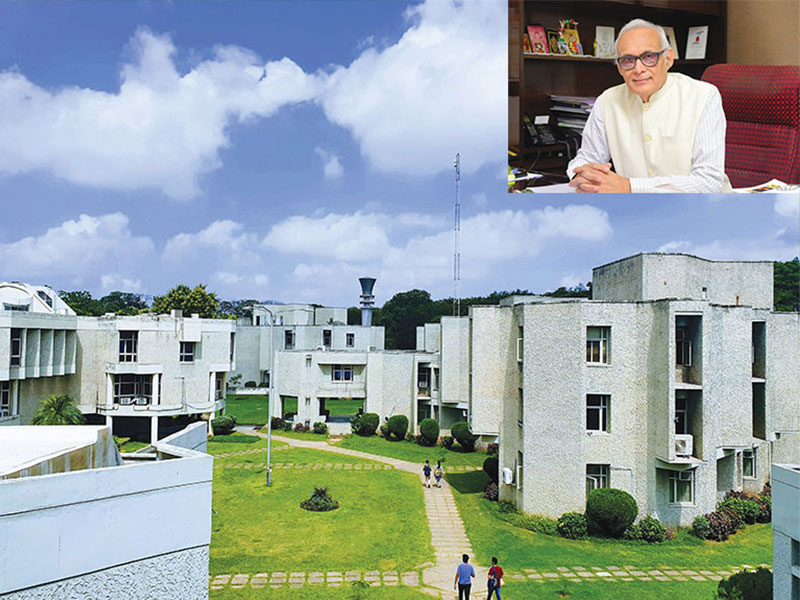
An alumnus of IIT-Delhi and the blue-chip Georgia Tech University, Atlanta (USA) with professional experience in Reliance Industries, Mafatlal Industries and the Sunflag Group (Tanzania), Prof. Hitesh Bhatt signed up in 2010 with the Institute of Rural Management, Anand (IRMA, estb.1979), Gujarat, founded by the legendary Dr. Verghese Kurien, and was promoted to the director’s office in 2017. Excerpts from an interview:
By common consensus, IRMA is ranked India’s #1 agriculture/rural India B-school. What in your opinion are the major achievements of IRMA?
Institute of Rural Management Anand (IRMA) was established in 1979 by Dr. Verghese Kurien, father of India’s White Revolution. The philosophy behind the institute was to professionalise managements of organisations that serve underserved sectors of our economy. The unique strength of IRMA is our ability to develop managers with capability to nurture agriculture-focused institutions and organisations. Over the past 40 years, IRMA has certified 3,500 nation builders and global leaders who have been awarded our two-year postgraduate diploma in rural management to fulfill Dr. Kurien’s dream.
Some of our most notable alumni are: Dr. R.S. Sodhi, managing director of the Gujarat Milk Marketing Federation (Amul); V. Vivekanandan, CEO, South Indian Federation of Fishermen Societies; Alkesh Kumar Sharma, IAS; Sanjeev Asthana, CEO, Ruchi Soya; Angshu Mallick, COO, Adani Wilmar Ltd; Girish Menon, CEO, ActionAid UK; Sivakumar Surampudi, CEO, ITC (e-Choupal initiative); Andy Mukherjee, business journalist, Bloomberg; Rajiv Khandelwal, co-founder and executive director, Aajeevika Bureau; Mayank Midha, co-founder and CEO, GARV Toilets; Apoorva Oza, CEO, Aga Khan Rural Support Programme (India), Anusha Bharadwaj, executive director, Voice4Girls, among others.
How satisfied are you with the growth and development of IRMA?
Over a period of 38 years, IRMA has been able to attract the best students as well as the best corporates and voluntary organisations for campus recruitment. This is because of the high pedigree of our faculty members and excellent rural development curriculum. IRMA’s commitment to knowledge creation has led to its re-invention as a knowledge institution as opposed to a mere hub for teaching, training and research.
Despite 60 percent of India’s population being engaged in agriculture/farming, this sector contributes only 17 percent of annual GDP. How do you explain the low productivity of Indian agriculture?
This is a misreading of the situation. It’s not agriculture production and productivity that has gone down. It is because the share of the services sector in the economy has risen exponentially. Until the mid-1980s, the contribution of the services sector to GDP was negligible. But currently, its contribution is over 50 percent. Therefore, the contribution of agriculture to GDP has declined. However, agriculture production and productivity has risen steadily. Foodgrain production has quintupled since 1950 and there’s been great progress in recent years of poultry, fisheries and dairy products in response to shifting public demand. India’s agriculture universities and IRMA have all contributed to increased productivity and management of farm produce.
What’s your take on the new legislation passed by Parliament to liberalise and deregulate Indian agriculture?
The three Bills passed by Parliament recently will enable farmers to sell their produce freely to any purchaser rather than bind them to highly cartelised APMCs. Moreover, cash-starved farmers can now lease their land to individuals and companies on contract basis to earn rents and perhaps a share of income. Farmers can sign farming agreements with agribusiness firms, processors, wholesalers, exporters etc, for sale of farm produce at mutually pre-agreed prices. The resistance to the legislation is mainly from large farmers in the agriculture states in the north who are assured minimum support prices (MSP) for their produce. However, it’s important to bear in mind that only 6 percent of the country’s foodgrains is given MSP. The remainder is sold in the market anyway. Now farmers have the freedom to sell to the APMCs/mandis at MSP or to anyone else. Competition among buyers will result in better prices for farm produce.
Also read: India’s ivory tower agriculture universities
